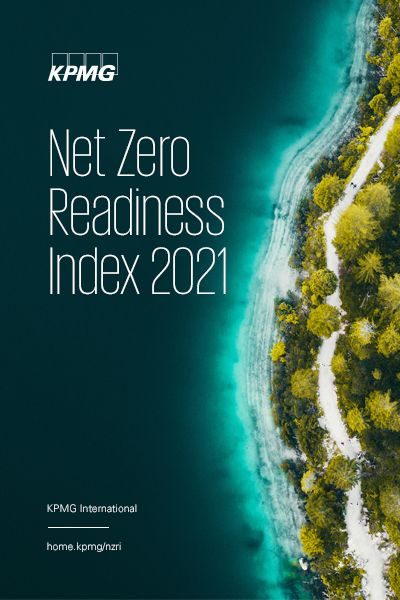Canada’s heavy reliance on fossil fuel and fossil fuel exports, extreme climate and cultural challenges make decarbonization challenging, but political will is increasing with legislation for targets and mechanisms to support markets.
Political will
Canada, which is ranked eighth overall and sixth on national preparedness, faces challenges to its decarbonization credibility as a major exporter of oil that is also developing a liquid natural gas export facility. But there is political will to change, with the federal government introducing a Net Zero Emissions Accountability act, which came into law in June 2021 and set legally-binding 5 yearly emissions targets from 2030.
Jonathan Erling, Executive Director at KPMG in Canada, notes the federal government introduced a carbon price of 170 Canadian dollars per tonne (CAD) (USD136) by 2030,1 with the income recycled to citizens through income tax credits. It has also spent on projects designed to reduce emissions, such as upgrading power grids and subsidizing home energy efficiency upgrades. “While some view this as movement in the right direction, others say government project support is not necessarily directed to the most cost-effective places,” he adds.

“A March 2021 finding by the Supreme Court of Canada states the federal carbon price is constitutional had important practical effects and effectively nullified the debate as to whether a carbon tax can be implemented to a conversation about stringency that treats carbon pricing as certain,” adds Mikaela McQuade, Director, Energy, Climate and Resources, Eurasia Group. “For the business and investment environment, a consistent and predetermined price signal will allow long-term planning for economic decarbonization projects.”
Challenges to scaling renewable electricity
Canada produces around 67 percent of its electricity from renewable resources with Ontario, Canada’s most populous province, generating about 95 percent of its electricity from zero emissions sources including nuclear. There is huge potential to further develop such sources including wind, hydroelectric and, in Alberta, geothermal.
But Erling says that there are still major challenges in moving to a Net Zero future. For example, Ontario relies extensively on natural gas to heat buildings and the province experiences severe winters where temperatures can dip to minus 20 degrees Celsius or below. On such days, Ontario’s gas network delivers three or four times the energy of its electricity grid, so heating buildings with electricity would require adding massive additional capacity to the power grid, where such capacity would only be used for a few months each year. Some Canadian cities experience temperatures of minus 40 degrees Celsius or colder, beyond the capacity of air-source heat pump technology, which is one option that might facilitate the use of electricity for heating. “Canada hasn’t really figured out how to replace natural gas,” says Erling.

In 2016, Ontario’s government considered banning the use of natural gas for heating in new homes by 2030, but then backed away from this.2 “I don’t think there is recognition, even among politicians, about how difficult the Net Zero target is,” says Erling. There are also tensions among Canadian provinces, with Alberta’s expanding production of natural gas and heavy crude from oil sands having led to corresponding increases in greenhouse gas emissions. Developing technologies for carbon capture and storage, making use of depleted oil wells, could provide a more environmentally friendly approach for continued fossil fuel production; however, this will take political will and active policy support.
Changing behavior
As a country with abundant sources of power, both fossil fuel and renewable, Erling says: “Canada has become accustomed to cheap energy and has built cities and lifestyles accordingly.” Urban areas are not as dense as elsewhere in the world, homes are larger and there is relatively little use of public transport. While the fuel efficiency of any given size of vehicle has increased over time, Canadians have increasingly adopted light trucks and sports utility vehicles rather than cars over recent years and the country has high transport emissions per person and a relatively low adoption of electric vehicles. Given Canada’s close economic ties with the United States, it also can be hard to diverge from American practices, both in terms of carbon pricing and in terms of technology standards.
1 John Paul Tasker, ‘Ottawa to hike federal carbon tax to $170 a tonne by 2030’, CBC, 11 December 2020. https://www.cbc.ca/news/politics/carbon-tax-hike-new-climate-plan-1.5837709
2 Kelly Cryderman and Jeff Lewis, ‘Wynne steps back from plan to phase out natural gas in Ontario’, The Globe and Mail, May 26, 2016. https://www.theglobeandmail.com/news/national/wynne-steps-back-from-plan-to-phase-out-natural-gas-in-ontario/article30182423/




